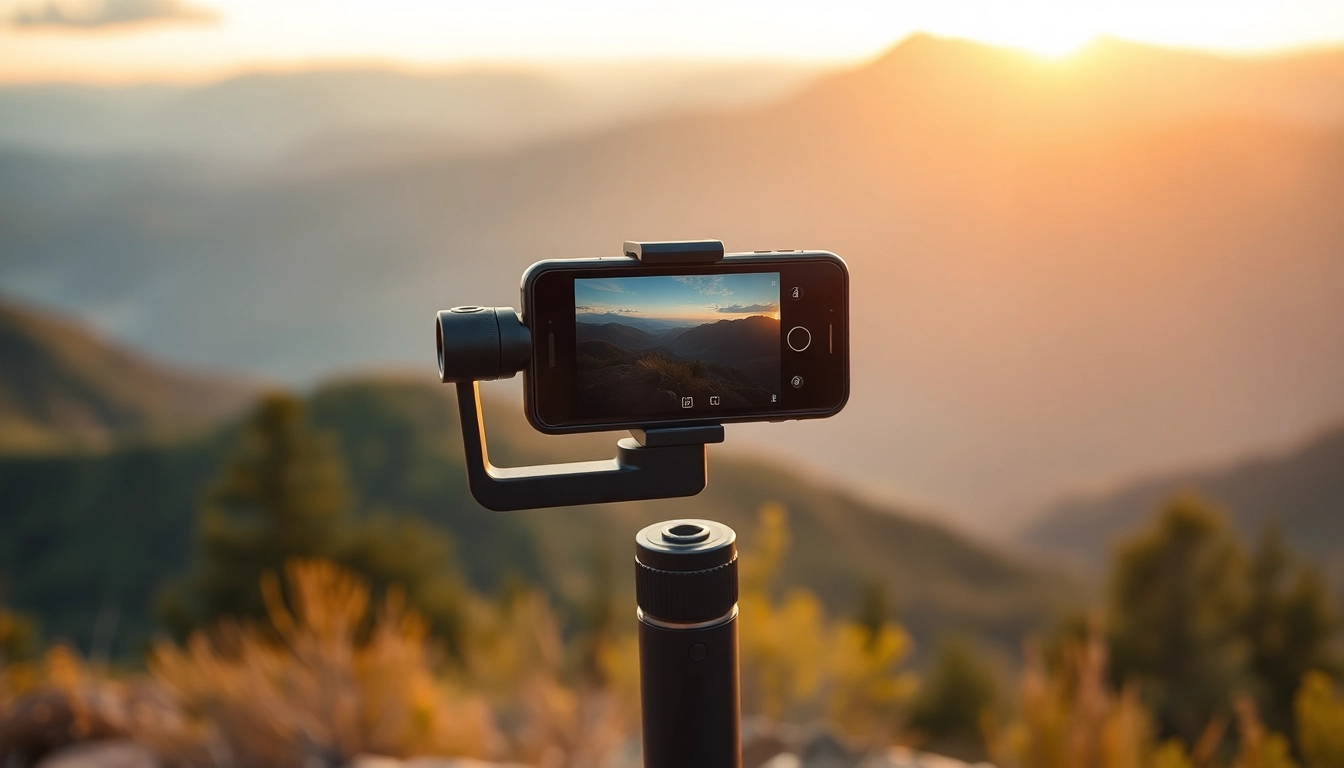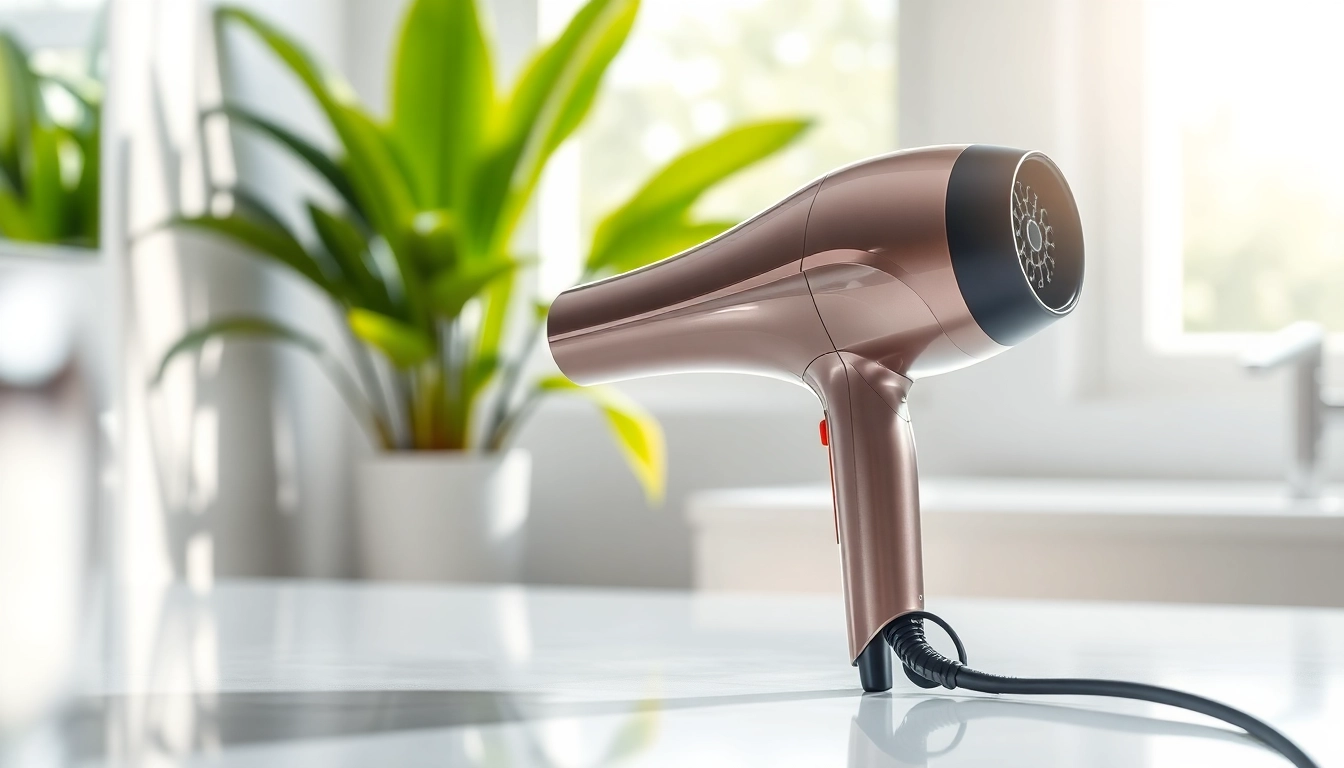Understanding the Gimble: What It Is and How It Works
In the realm of video production and photography, achieving smooth, stable recordings is crucial. One device central to this endeavor is the gimble. A gimble, often referred to as a gimbal, is an essential tool designed to keep your camera steady, countering any unwanted movements or vibrations that may occur during filming. This article delves into the anatomy of a gimble, its technological advancements, types, and their optimal applications.
The Essential Components of a Gimble
To fully appreciate how a gimble functions, it’s essential to understand its core components. A typical gimble consists of:
- Motorized Stabilizers: These motors control the tilt, pan, and roll of the camera, enabling smooth transitions and adjustments during shooting.
- Control Algorithm: The software that processes input from the motors and sensors, adjusting the position of the camera in real-time based on movement.
- Battery: A rechargeable battery is essential for powering the motors and electronic components, typically offering several hours of operation.
- Mounting Plate: Allows easy attachment and detachment of the camera, sometimes featuring quick-release mechanisms for efficiency.
- Handle: The ergonomic design of the handle provides comfort during extended use, often with controls for operating the gimble.
How Gimble Technology Enhances Video Quality
The primary purpose of a gimble is to enhance video quality by stabilizing footage. When using a gimble, the balancing system minimizes shakiness and allows for fluid motion. This is especially beneficial in dynamic filming scenarios, such as when the camera is in motion or when shooting from various angles. Key benefits include:
- Improved Stability: The gimble compensates for any sudden movements, creating a smoother viewing experience.
- Versatile Angles: Filmmakers can create unique perspectives without worrying about maintaining stability.
- Real-time Adjustments: Advanced gimbles can adjust automatically to unexpected movements, ensuring consistent quality throughout the shoot.
Types of Gimbles and Their Best Uses
There are several types of gimbles available on the market, each designed for specific applications:
- Handheld Gimbals: Ideal for smartphone and small to medium-sized cameras, providing a balance between portability and stabilizing capability.
- Wearable Gimbals: These are designed to be attached to the body, perfect for action sequences or when the camera needs to follow a subject closely.
- Camera Gimbals: Full-sized gimbals that support heavier equipment, suitable for professional filming and cine-photography.
Choosing the Right Gimble for Your Needs
Selecting the right gimble entails considering various factors that align with your specific filming requirements. Here are essential aspects to ponder:
Factors to Consider When Selecting a Gimble
Choosing the appropriate gimble requires assessing the following:
- Weight Capacity: Ensure the gimble can support your camera’s weight, factoring in any accessories like microphones or lights.
- Battery Life: A longer battery duration reduces the frequency of recharging during shoots.
- Ease of Use: Look for user-friendly interfaces and ergonomic designs that facilitate smoother operation.
- Portability: If you plan to move frequently, consider the size and weight of the gimble for easier transport.
Budgeting for a Quality Gimble
The price of gimbles can range significantly based on features and build quality. A well-allocated budget will ensure you choose a gimble that meets your needs without compromise:
- Entry-level gimbles: Generally range from $50 to $150, suitable for beginners or casual use.
- Mid-range gimbles: These often cost between $150 to $400, offering enhanced stability and functionality for more serious hobbyists or semi-professional filmmakers.
- Professional gimbles: Frequently priced from $400 and up, these are tailored for high-end video production, supporting heavier cameras and advanced features.
Comparing Features Across Different Models
With various models on the market, comparing features is pivotal. Here are key features to analyze:
- Axis Stabilization: Most gimbles have either 2-axis or 3-axis stabilization, with 3-axis providing the most fluid motion.
- Control Options: Many gimbles now come with app support allowing remote control and adjustments through smartphones.
- Smart Features: Look for built-in features like face tracking, object tracking, and time-lapse capabilities, which can enhance your shooting experience.
Using a Gimble: Best Practices for Filmmakers
After selecting the right gimbal, it’s essential to understand how to operate it effectively. Implementing best practices will ensure that you maximize the potential of this tool:
Essential Techniques for Balanced Shots
Achieving balanced shots is key to creating professional-looking footage. Here are tips to ensure proper balance:
- Balance Your Setup: Before powering on your gimble, adjust the camera’s position to align the center of gravity with the pivot point of the gimble.
- Maintain a Steady Grip: Keeping your hands steady and using your body to move the camera rather than just your hands can greatly reduce shakiness.
- Utilize Smooth Movements: Practice moving slowly and deliberately; sudden jerks can destabilize your shots.
Common Mistakes to Avoid with Your Gimble
Even seasoned filmmakers can make mistakes. Here are common missteps with gimbles and how to avoid them:
- Forgetting to Adjust Settings: Ensure the gimble settings are configured correctly for your specific shooting environment.
- Neglecting Battery Management: Always charge your gimbal prior to shoots to avoid interruptions.
- Overloading the Gimble: Make sure to adhere to the weight limits to ensure optimal performance and longevity of the device.
Advanced Techniques for Professional Results
For those looking to elevate their filming game, these advanced techniques can offer more creative options:
- Using a Tripod Connection: Combine your gimble with a tripod for static shots requiring smooth pans or tilts.
- Implementing Motion Timelapses: Utilize the programmability of your gimble to create stunning and dynamic timelapse shots.
- Experimenting with Angles: Try different angles and perspectives, such as low-to-the-ground or high-over-head shots, for dramatic effects.
Integrating a Gimble into Your Filmmaking Workflow
Once you have mastered using a gimble, the next step is integrating it effectively into your overall filmmaking workflow:
Setting Up Your Gimble for Optimal Performance
A solid setup is critical for achieving the best results with your gimble:
- Calibration: Regularly calibrate your gimble to ensure that the stabilization features are functioning correctly.
- Firmware Updates: Keep the gimble updated to benefit from improvements and new features introduced by the manufacturer.
- Practice: Regular use and experimentation with settings will help you find the best configurations for different shooting styles.
Coordinating Your Gimble with Other Equipment
To enhance your filming capabilities, consider how to coordinate your gimble with other equipment:
- Camera Settings: Ensure camera settings (such as ISO, aperture, and shutter speed) are optimized for the conditions of the shoot.
- Using External Mics: When using audio capture, consider how to balance additional equipment without affecting the gimble’s stability.
- Remote Controls: Integrate remote controls that can operate both the camera and the gimbal for seamless shooting experiences.
Editing Tips for Videos Shot with a Gimble
Even with stable footage, effective editing will enhance the final video product:
- Color Grading: Enhance visual quality through color grading, bringing life to clips filmed with the gimble.
- Cutting Techniques: Utilize jump cuts or continuity cuts to maintain the flow while still leveraging smooth transitions from the gimble.
- Sound Design: Pay attention to audio, pairing smooth visuals with complementary sound effects and music tracks for a polished finish.
Future Trends in Gimble Technology
As video technology continues to evolve, so too does the gimble. Understanding future trends can prepare filmmakers for the innovations ahead:
What to Expect in Gimble Innovations
Here are several anticipated innovations in gimbal technology:
- Increased Automation: Expect to see smarter gimbals that can automate complex movements through AI and machine learning.
- Expanded Compatibility: Future gimbals may offer enhanced compatibility with newer camera technologies.
- Modular Designs: Gimbals that allow for interchangeable components will enable users to customize based on specific needs.
How AI is Influencing Gimble Designs
AI is rapidly transforming the filmmaking landscape, and gimbals are no exception. Here’s how it’s impacting design:
- Real-time Learning: Future gimbals may be designed to learn from your shooting habits, optimizing performance based on user behavior.
- Automatic Scene Recognition: Advanced gimbals could identify different shooting environments and adjust settings accordingly, enhancing footage quality.
- Enhanced Tracking: AI could refine tracking capabilities, allowing for smoother following of subjects and reducing manual adjustments.
Preparing for Upcoming Trends in Video Production
To stay competitive in the evolving field of video production, filmmakers should develop strategies to adapt to these changing trends:
- Continuous Learning: Stay informed on new techniques and technologies through workshops, webinars, and online courses.
- Networking: Engage with other professionals to share knowledge and experiences related to new equipment and filming practices.
- Investment in Technology: Plan for capital investment in upcoming technologies to maintain a cutting-edge production capability.



